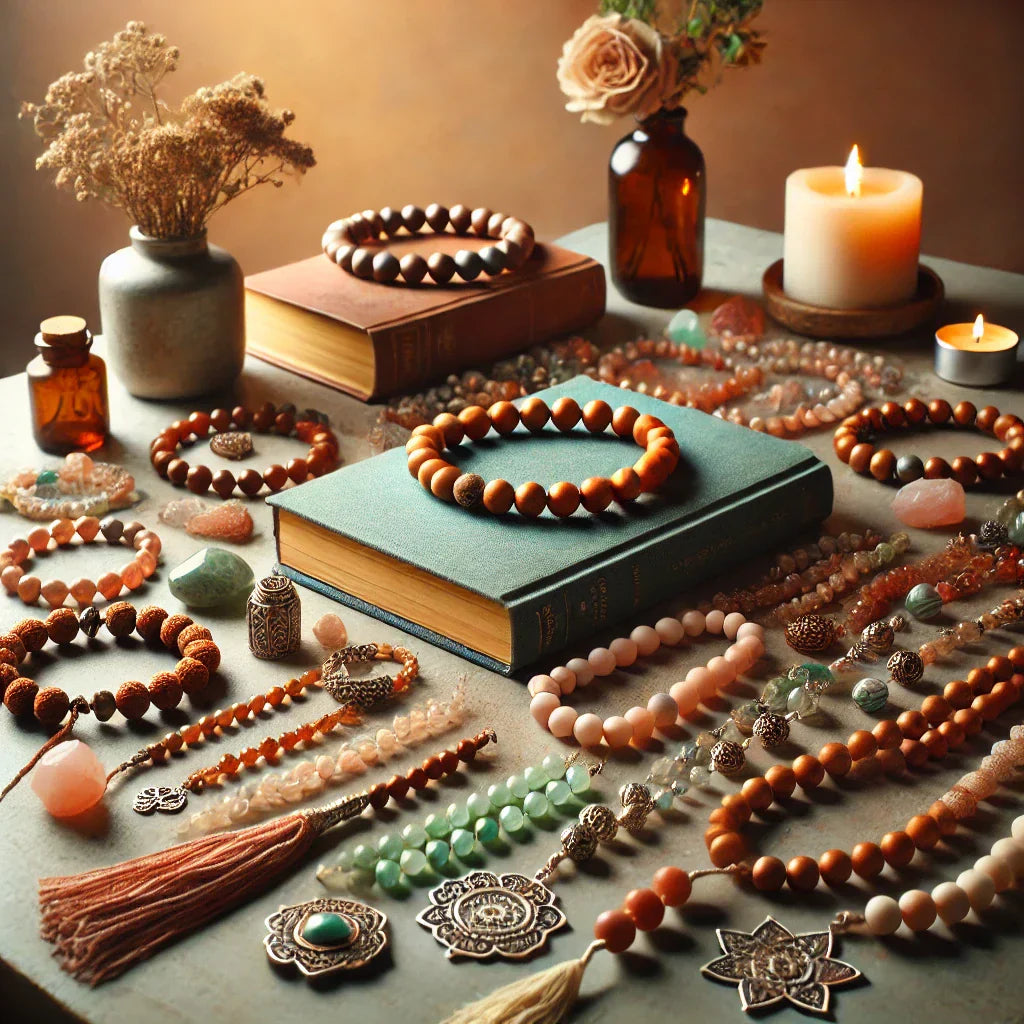
Blessing Beads
Share
The History and Uses of Blessing Beads: A Symbol of Faith, Meditation, and Home Decor
Blessing beads have long been cherished as symbols of faith, protection, and positive energy. Used in various cultures and spiritual traditions, these beads are known by many names, including prayer beads, meditation beads, and gratitude beads.
Whether used in religious rituals, meditation practices, or home decor, blessing beads serve as a meaningful and beautiful reminder of peace, faith, and gratitude.

A Brief History of Blessing Beads
The origins of blessing beads can be traced back thousands of years to ancient civilizations, where beads were used for prayer, meditation, and personal adornment. The earliest known prayer beads date back to Hindu and Buddhist traditions around 500 BCE. These beads, known as mala beads, were used for counting mantras and prayers, helping practitioners focus during meditation.
The use of prayer beads later spread to Christianity and Islam. The Catholic rosary, first introduced in the Middle Ages, consists of a string of beads used to count prayers and reflect on sacred mysteries. In Islam, misbaha or tasbih beads serve a similar purpose, helping devotees recite the 99 names of Allah. In many African and Indigenous cultures, beads have also been used for protection, storytelling, and connection to the divine.
Over time, blessing beads have evolved into a widely appreciated symbol of faith and mindfulness, transcending religious boundaries and becoming a cherished element of meditation and home decor.
Alternative Names for Blessing Beads
Blessing beads go by different names depending on their use and cultural background. Some of the most common names include:
-
Prayer Beads – Used in spiritual and religious practices to count prayers or chants.
-
Meditation Beads – Used to aid concentration and mindfulness during meditation.
-
Worry Beads – A traditional Greek and Middle Eastern accessory (often called komboloi or tesbih) used to relieve stress and anxiety.
-
Gratitude Beads – Used to cultivate a daily habit of gratitude by reflecting on life’s blessings.
-
Intention Beads – Worn or carried to serve as a reminder of personal goals and aspirations.
-
Decorative Blessing Beads – Used in home decor as a symbol of peace, protection, and positive energy.
How to Use Blessing Beads for Meditation and Prayer
Blessing beads are a powerful tool for enhancing meditation and prayer. They provide a tactile way to focus the mind, making spiritual practices more engaging and intentional. Here are some common ways to use them:
-
Mantra Meditation – Hold the first bead and recite a mantra, prayer, or affirmation. Move to the next bead with each repetition, allowing the rhythm to guide you into a meditative state.
-
Gratitude Practice – Hold a bead and reflect on something you’re grateful for. Move bead by bead, giving thanks for each blessing in your life.
-
Breathwork – Use the beads to count breaths, inhaling and exhaling deeply as you move along the strand. This helps with relaxation and mindfulness.
-
Prayer and Devotion – Many religious traditions use blessing beads to guide structured prayers, such as the Catholic Rosary, Islamic Tasbih, or Hindu Mala chants.
-
Setting Intentions – Assign each bead a personal goal or intention. As you move through the beads, focus on manifesting these desires in your life.
Incorporating Blessing Beads into Home Decor
Beyond their spiritual significance, blessing beads are also popular in home decor, bringing a touch of serenity and elegance to any space. They can be used in various ways to enhance a home’s aesthetic and energy:
-
Draped Over Books or Trays – Lay a strand of blessing beads over a coffee table book or decorative tray to add texture and charm.
-
Hung on Door Handles or Wall Hooks – Placing beads near doorways is believed to bring blessings and protection to a home.
-
Wrapped Around Candles or Vases – Use blessing beads to create an eye-catching display by draping them around candle holders or flower vases.
-
As a Centerpiece – A bowl filled with blessing beads can serve as a meaningful centerpiece, symbolizing abundance and tranquility.
-
On a Meditation Altar – If you have a meditation or prayer space, placing blessing beads on an altar can enhance the spiritual ambiance.
Choosing the Right Blessing Beads
Blessing beads come in a variety of materials, each with its own significance and energy. Some popular options include:
-
Wooden Beads – Represent nature, grounding, and simplicity.
-
Crystal or Gemstone Beads – Known for their healing properties; for example, rose quartz promotes love, while amethyst encourages spiritual growth.
-
Clay or Ceramic Beads – Handmade and earthy, these beads are unique and meaningful.
-
Glass Beads – Beautiful and delicate, they add a decorative touch with their vibrant colors.
When selecting blessing beads, consider their purpose—whether for meditation, prayer, or decoration—and choose materials that resonate with your personal energy.
Conclusion
Blessing beads are more than just decorative accessories; they are symbols of faith, mindfulness, and intention. Whether used for meditation, prayer, or home decor, they serve as gentle reminders to embrace peace, gratitude, and positive energy in our daily lives. From their ancient origins to their modern-day applications, these cherished beads continue to inspire and uplift people across cultures and traditions.
